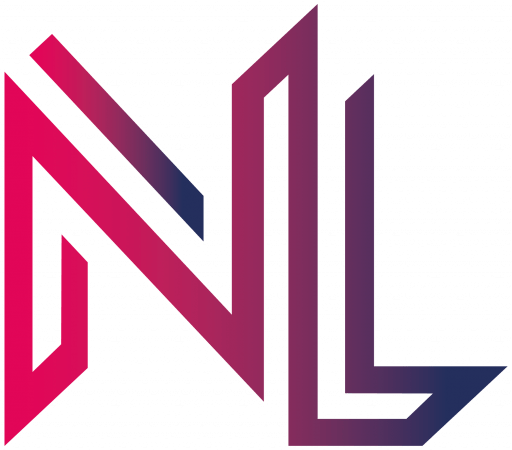const { PDFDocument } = require('pdf-lib')
// file = { fileName: 'test1.pdf, content: arraybuffer }
const originalPdf = await PDFDocument.load(file.content, { ignoreEncryption: true })
const newPdf = await PDFDocument.create()
const [firstPage] = await newPdf.copyPages(originalPdf, [0]) // <-- 0 is the first page
newPdf.addPage(firstPage)
const firstPagePdf = await newPdf.save()
file.content = Buffer.from(firstPagePdf)
Tag: nodejs
[nodejs] Merge PDFs using pdf-lib
https://github.com/Hopding/pdf-lib
const { PDFDocument } = require('pdf-lib')
// files = [{ fileName: 'test1.pdf, content: arraybuffer },{ fileName: 'test2.pdf, content: arraybuffer }]
mergePdfs: async function (files) {
try {
const mergedPdf = await PDFDocument.create()
for (let file of files) {
const pdf = await PDFDocument.load(file.content)
const copiedPages = await mergedPdf.copyPages(pdf, pdf.getPageIndices())
copiedPages.forEach((page) => mergedPdf.addPage(page))
}
const mergedPdfFile = await mergedPdf.save()
const buffer = Buffer.from(mergedPdfFile)
return await buffer.toString('base64') // return as buffer or base64 encoded file
} catch (err) {
console.error(err.message)
}
}
[JavaScript] Nullish coalescing assignment (??=)
const a = { duration: 50 };
a.duration ??= 10;
a.speed ??= 25;
console.log(a.duration); // Expected output: 50
console.log(a.speed); // Expected output: 25
Replacement for:
a.duration = a.duration ?? 10
[nodejs] workspaces
If you have subdirectories or additional applications which have its own package.json file, you can add them via the workspaces setting to your main project.
{
"name": "my-project",
"workspaces": [
"./app/*"
]
}
When running npm install it will now also install the dependencies of all projects in the app folder.
[JavaScript] Clone an object containing a file as ArrayBuffer
Use the build in function structuredClone() to copy all kind of complex JS types.
Official documentation: https://developer.mozilla.org/en-US/docs/Web/API/Web_Workers_API/Structured_clone_algorithm#supported_types
Comparison to other copy techniques like spread or json.stringify: https://www.builder.io/blog/structured-clone
[nodejs] Node Version Manager (NVM)
# Install script: https://github.com/nvm-sh/nvm#install--update-script
curl -o- https://raw.githubusercontent.com/nvm-sh/nvm/v0.39.5/install.sh | bash
# check current used node version
node -v
# list local available node versions
nvm list
# list all released node versions
nvm ls-remote
# install specific node version and switch to it
nvm install v20.5.1
# switch to a specific node version, which is already installed
nvm use v20.5.1
[CAP] Posting form data to a destination using executeHttpRequest
const { executeHttpRequest } = require('@sap-cloud-sdk/http-client')
const FormData = require('form-data')
try {
//Create payload
const form = new FormData()
form.append('file', fileContent, {
contentType: 'application/pdf'
filename: 'test.pdf'
})
//Create headers
const headers = {
...form.getHeaders(),
'Content-Length': form.getLengthSync(),
}
//Send to Destination
const response = await executeHttpRequest(
{ destinationName: 'TESTINATION' },
{
method: 'POST',
url: 'myApiPath',
headers: headers,
data: form,
responseType: 'arraybuffer' // if you need the response data as buffer to prevent UTF-8 encoding
}
)
console.log({response})
} catch (error) {
console.error(error.message)
}
[nodejs] ArrayBuffer to Buffer | Uint8Array to Buffer
https://nodejs.org/api/buffer.html
const buffer1 = Buffer.from(ArrayBuffer)
const buffer2 = Buffer.from(Uint8Array)
[nodejs] Create buffer from stream
Using a promise
const streamToBuffer= async () => {
return new Promise(function (resolve, reject) {
const chunks = []
stream.on('data', chunk => chunks.push(chunk))
stream.on('end', () => resolve(Buffer.concat(chunks)))
stream.on("error", err => reject(err))
})
}
const buffer = await streamToBuffer()
A stream is also iterable (see here), so you can also use for await...of (example)
const chunks = []
for await (const chunk of stream) {
chunks.push(chunk)
}
const buffer = Buffer.concat(chunks)
[nodejs] Parsing multipart/mixed response (containing a file stream)
Recently I had to consume an API which returned multipart/mixed data. A response looked like this:
--Boundary_0000000000001
Content-Type: application/octet-stream
Content-Disposition: attachment; filename"test.pdf"
%PDF-1.7
%�������
1 0 obj
...
%%EOF
--Boundary_0000000000001
Content-Type: application/json
{"data":[]}
--Boundary_0000000000001--
There are some node packages for parsing multipart responses, but most can only handle multipart/formData and not multipart/mixed. The most recommended package for multipart/mixed is Dicer, but to be honest, I wasn’t sure how to use it properly. Therefore, I built my own parser. Luckily the user idbehold provided a function to parse a response string into a json object here. To get it working, I just had to change the regex expressions in the split function. The most important step is to convert the data from the arrayBuffer to a String in binary encoding before parsing.
Also, I wrote two helper functions. The first one to parse the boundary string from the Content-Type and the second one to parse the filename from the Content-Dispositon Header of your response.
module.exports = new class multipartMixedParser {
parse(boundary, buffer) {
const body = buffer.toString('binary') //toString encodes to utf-8 as default, this would lead to corrupted pdf's
return body.split(boundary).reduce((parts, part) => {
if (part && part !== '--\r\n') {
const [head, body] = part.trim().split(/\r\n\r\n/g)
console.log({ body })
parts.push({
body: body,
headers: head.split(/\r\n/g).reduce((headers, header) => {
const [key, value] = header.split(/:\s+/)
headers[key.toLowerCase()] = value
return headers
}, {})
})
}
return parts
}, [])
}
getBoundaryFromResponseHeaders(headers) {
//example: multipart/mixed;boundary=Boundary_0000000000001 -> --Boundary_0000000000001
const contentType = headers.get('content-type')
return '--' + contentType.split("=")[1].split(";")[0]
}
getFileNameFromContentDisposition(cd) {
//example: 'attachment; filename="example.pdf"' -> example.pdf
return cd.slice(
cd.indexOf('"') + 1,
cd.lastIndexOf('"')
)
}
}
And that’s how I’m calling the API and using the multipartMixedParser Class to parse the response. The API I was using is expecting a file as formData and is also returning a file (as part of the multipart/mixed response).
It’s important to get the buffer from the response. If you would use response.getText() it would convert the data to an utf-8 encoded string which will lead to corrupted files.
Please note, I’m using node-fetch. When using Axios, the response object will look different.
const btoa = require('btoa')
const FormData = require('form-data')
const fetch = require('node-fetch')
const multipartMixedParser = require('./multipartMixedParser')
function callAPI(file) {
const form = new FormData()
form.append('file', file.content, {
contentType: file.mediaType,
filename: file.fileName
})
const headers = {
'Authorization': 'Basic ' + btoa(username + ':' + password),
...form.getHeaders()
}
const url = /my/api/path
try {
const response = await fetch(url, {
method: 'POST',
headers: headers,
body: form
})
if (!response.ok) throw new Error(response.statusText)
//parse the response
const buffer = await response.buffer()
const boundary = multipartMixedParser.getBoundaryFromResponseHeaders(response.headers)
const result = multipartMixedParser.parse(boundary, buffer)
// in my case I only returned the file content as buffer and filename
return {
fileContent: Buffer.from(result[0].body, 'binary'),
fileName: multipartMixedParser.getFileNameFromContentDisposition(result[0].headers["content-disposition"])
}
} catch (err) {
console.log("Error message: " + err.message)
}
}
